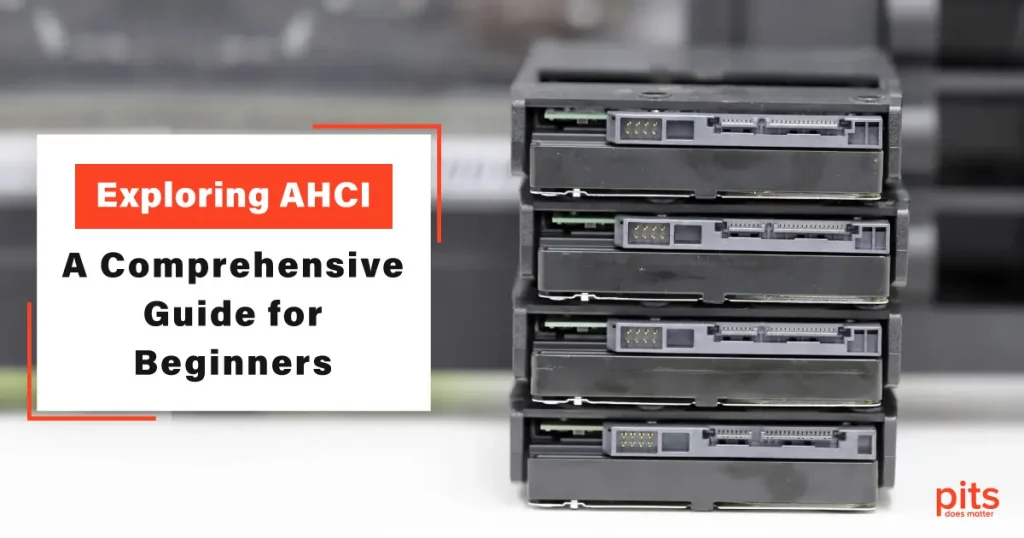AHCI, the Advanced Host Controller Interface, ensures efficient communication between the operating system and computer hardware and storage devices. AHCI, an acronym for Advanced Host Controller Interface, is a register-level interface that enables the use of Serial ATA (SATA) controllers to connect storage devices like hard drives and solid-state drives (SSDs) to the computer system. In this comprehensive guide, we will delve into the world of AHCI, exploring its functionalities, benefits, and how to switch to AHCI mode for enhanced performance.
What is AHCI?
What is AHCI? AHCI, or Advanced Host Controller Interface, is a technical specification that defines the operation of SATA drives and their controllers. It serves as a bridge between the operating system and the SATA drive, allowing for efficient data transfer, advanced features, and increased performance. AHCI was introduced as a replacement for the older Integrated Drive Electronics (IDE) mode, which was prevalent in earlier systems.

AHCI allows the operating system to interact with SATA drives using the host controller interface. By providing a standard software interface, AHCI enables features such as native command queuing (NCQ), hot swapping, and hot plugging. NCQ optimizes the order in which data is sent to and retrieved from the storage device, resulting in improved performance. Additionally, hot swapping and hot plugging capabilities enable the connection and disconnection of drives without requiring a system restart.
What is AHCI Mode
What is AHCI Mode? AHCI offers two modes of operation: legacy IDE mode and AHCI mode. The legacy IDE mode emulates the behavior of older IDE drives and provides backward compatibility for operating systems that do not support AHCI. However, this mode lacks the advanced features and performance enhancements of AHCI.
On the other hand, AHCI mode unleashes the full potential of SATA drives. It enables features such as native command queuing, which improves data transfer speeds and reduces latency. AHCI mode is particularly beneficial for systems utilizing solid-state drives, as it maximizes their performance.
Benefits of AHCI
- Enhanced Performance: AHCI unlocks the full potential of SATA drives, enabling faster data transfer rates, reduced latency, and improved overall system performance.
- Native Command Queuing (NCQ): AHCI’s NCQ feature optimizes the order in which data is retrieved from the drive, resulting in faster access to files and improved multitasking capabilities.
- Hot Swapping and Hot Plugging: AHCI allows for the convenient and safe connection and disconnection of drives without rebooting the system, providing flexibility and ease of use.
- Improved Compatibility: AHCI is supported by modern operating systems, including Windows Vista and later versions, as well as various Linux distributions, making it a reliable and widely compatible interface.

Switching to AHCI
To switch to AHCI mode, you need to follow these steps:
- Backup your data: Before making any changes, it is essential to back up your important files and data to ensure their safety.
- Enter BIOS/UEFI settings: Restart your computer and enter the BIOS/UEFI settings by pressing the designated key during the startup process (usually displayed on the screen).
- Locate SATA settings: Navigate through the BIOS/UEFI settings to find the SATA configuration options. The location and terminology may vary depending on your motherboard manufacturer.
- Switch to AHCI: Once you locate the SATA settings, change the mode from IDE or RAID to AHCI. Save the changes and exit the BIOS/UEFI settings.
- Boot into the operating system: After restarting your computer, it will now boot into the operating system using AHCI mode.
AHCI, the Advanced Host Controller Interface, is a vital component in modern computer systems that utilize SATA drives. Its ability to facilitate efficient communication between the operating system and storage devices allows for enhanced performance, advanced features, and improved compatibility.
By understanding the basics of AHCI and making the switch from legacy IDE mode, users can unlock the full potential of their SATA drives and experience a significant boost in their system’s overall performance. Whether you are a beginner or a seasoned computer enthusiast, exploring AHCI is a crucial step toward optimizing your storage experience.
Frequently Asked Questions
What is AHCI, and why is it important?
AHCI stands for Advanced Host Controller Interface. It is a specification that defines the operation of SATA controllers, which are used to connect storage devices like hard drives and SSDs to a computer’s motherboard. AHCI is important because it enables advanced features such as hot swapping, Native Command Queuing (NCQ), and improved performance, allowing for a better overall storage experience.
How does AHCI differ from IDE mode?
IDE mode is an older emulation mode that SATA controllers can operate in, whereas AHCI is the modern and preferred mode. AHCI offers several advantages over IDE mode, including hot swapping support, NCQ for optimized data access, and improved performance for SATA drives, especially SSDs. IDE mode lacks these advanced features and may limit the performance and functionality of your storage devices.
Can I switch from IDE mode to AHCI without reinstalling my operating system?
Switching from IDE mode to AHCI generally requires some changes in the system’s BIOS/UEFI settings and may involve installing AHCI drivers or modifying registry settings in your operating system. While it is possible to switch to AHCI without reinstalling the OS, it is recommended to back up your data and follow the appropriate steps for your specific operating system to ensure a smooth transition.
Which operating systems support AHCI?
AHCI is supported by most modern operating systems. Windows Vista and later versions, Linux distributions, and macOS all have built-in support for AHCI. However, older operating systems may not natively support AHCI. In such cases, you may need to install specific drivers or perform additional steps to enable AHCI functionality.
Is AHCI required for using SSDs?
While AHCI is not strictly required for using SSDs, it is highly recommended. AHCI mode allows SSDs to take full advantage of their capabilities, such as fast data transfer rates, NCQ for optimized command execution, and TRIM support for maintaining performance over time. Switching to AHCI mode when using an SSD can significantly improve its performance and ensure you’re getting the most out of your storage investment.
